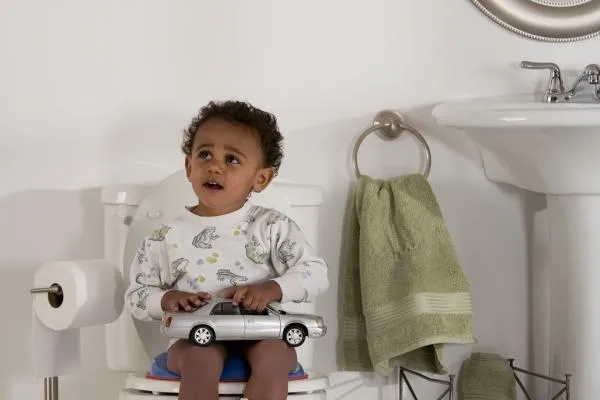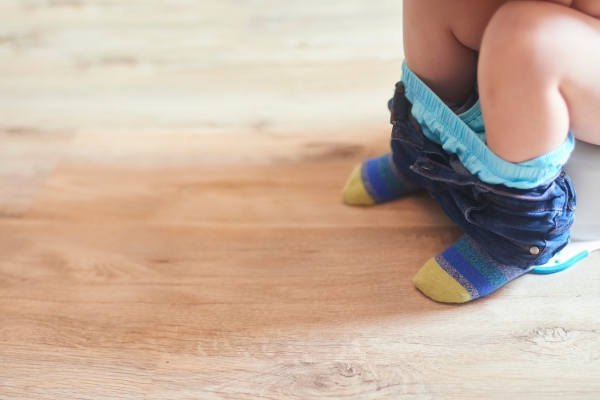
Understanding the Readiness for Potty Training
Understanding the Readiness for Potty Training
Before jumping into the process, it’s important to recognize whether your child is ready for potty training. The right time to begin isn’t just about age—it’s about physical, emotional, and cognitive readiness. Most children are ready to start between 18 and 24 months, but some may take longer.
Look for these signs of readiness:
Can your child stay dry for at least 2 hours?
Do they show interest in bathroom habits or try to imitate adult behavior?
Can they communicate when they need to go?
Are they able to pull down their pants and sit on the toilet independently?
If you observe these signs, it’s a good indicator that they are ready to start potty training.
Step-by-Step Potty Training Tips

Now that your child seems ready, it’s time to dive into practical tips to ease the potty training process. Here are some actionable steps:
1. Get the Right Equipment Invest in a child-sized potty or a seat adapter for the regular toilet. Allow your child to get used to the equipment before you start formal training. Let them sit on it with clothes first to familiarize themselves.
2. Create a Routine Schedule regular potty breaks. Have your child sit on the potty at regular intervals, such as after meals, before bed, and first thing in the morning. This builds a routine, making them comfortable with the process.
3. Use Positive Reinforcement Offer encouragement whenever your child tries, even if they don’t succeed every time. Stickers, praise, or a fun chart can help motivate them and celebrate each small success.
4. Keep Communication Simple Use clear and simple words for bathroom-related activities. Avoid using negative terms like “dirty” or “smelly.” Teach them positive phrases like “Let’s try going potty” or “Great job sitting on the toilet!”
5. Transition to Big Kid Underwear After some initial success, transition from diapers to training pants or regular underwear. Let your child pick out fun underwear, which may make them feel excited about staying dry and clean.
If you're observing these readiness signs and are looking for additional support, consider enrolling your child in our specialized child development programs. These programs not only provide personalized guidance on potty training but also encompass a holistic approach to your child’s early learning. Learn more and enroll today!
Handling Setbacks and Accidents
Stay Calm During Accidents
Accidents will happen—it's all part of the process. When they do, remain calm and reassure your child. You might say, "Oops, we’ll try again next time!" Avoid punishment or shaming, as this could create anxiety and slow the progress.
Recognize When to Take a Break
If your child is showing resistance or if potty training becomes a power struggle, it might be time to pause. Sometimes, a few weeks' break can make a big difference. Resume training when your child seems more willing and ready.
Nighttime Potty Training
Nighttime dryness is a different challenge altogether. It typically takes longer for children to stay dry during the night, and it can take until age 5 or even 7 for some kids. Until then, using training pants at night is perfectly fine. You can gradually introduce nighttime training once daytime control is well established.
Tips for Nighttime Training:
Limit liquids before bedtime.
Make sure your child uses the potty right before going to bed.
Consider waking your child once during the night to use the toilet.
Dealing with Regression

At times, children may regress in their potty training progress, especially during big life changes like moving homes or welcoming a new sibling. This is normal and usually temporary. Stay supportive and consistent, and they’ll regain their potty training habits.
Seeking Professional Help
If potty training seems particularly challenging or if your child is consistently having trouble after multiple attempts, it might be worth consulting with your pediatrician. There could be underlying physical or emotional issues that need attention.
Conclusion: Patience and Persistence
Potty training is not a one-size-fits-all process. It requires patience, persistence, and understanding of your child’s unique needs. Celebrate every small win and don’t be discouraged by setbacks. With time, your child will master this milestone and transition to the next stage with confidence.
By following these steps, you’ll make the potty training process smoother for both you and your child. Good luck, and remember, every child gets there in their own time!
As you dedicate effort to your child's potty training, why not ensure they continue to receive the best in early education? The Georgia Pre-K programs offer structured learning environments that nurture all aspects of your child’s development. Secure a spot now and provide your child with a head start in education. Apply for the Georgia Pre-K Lottery today.